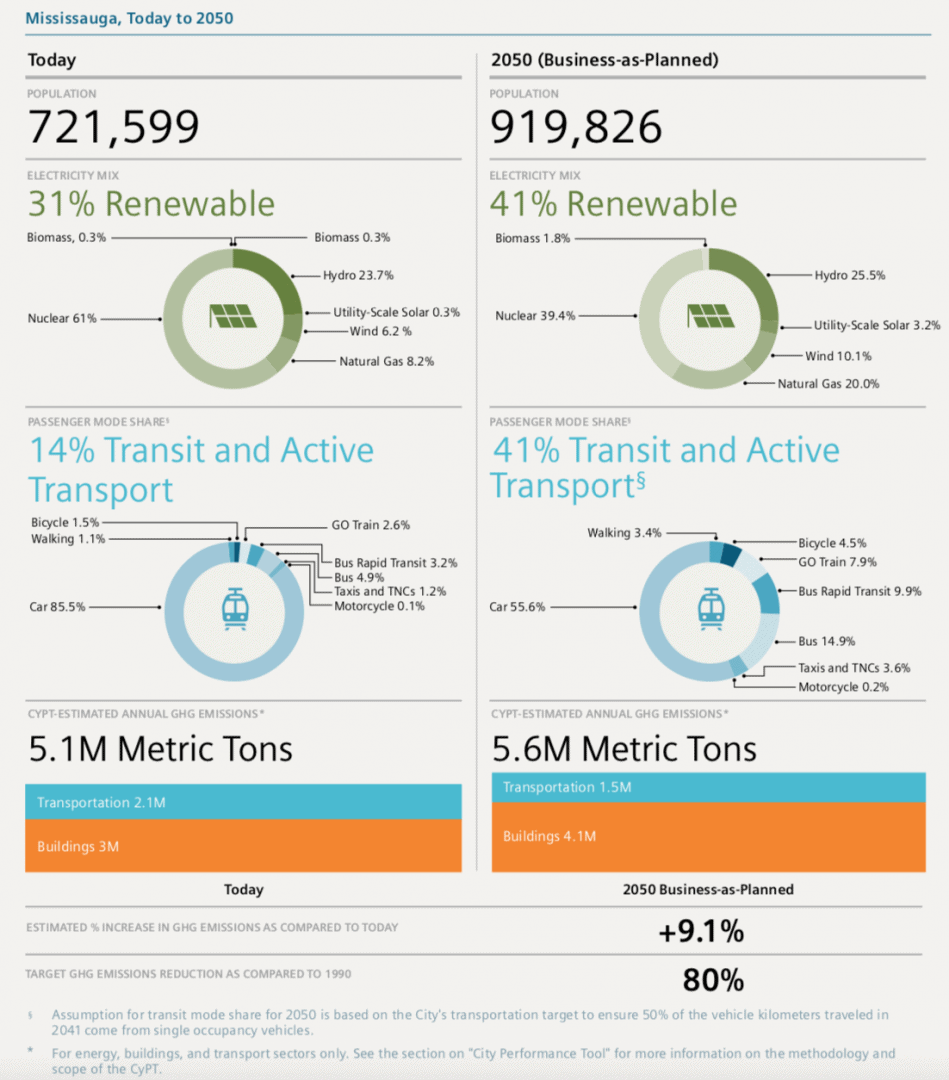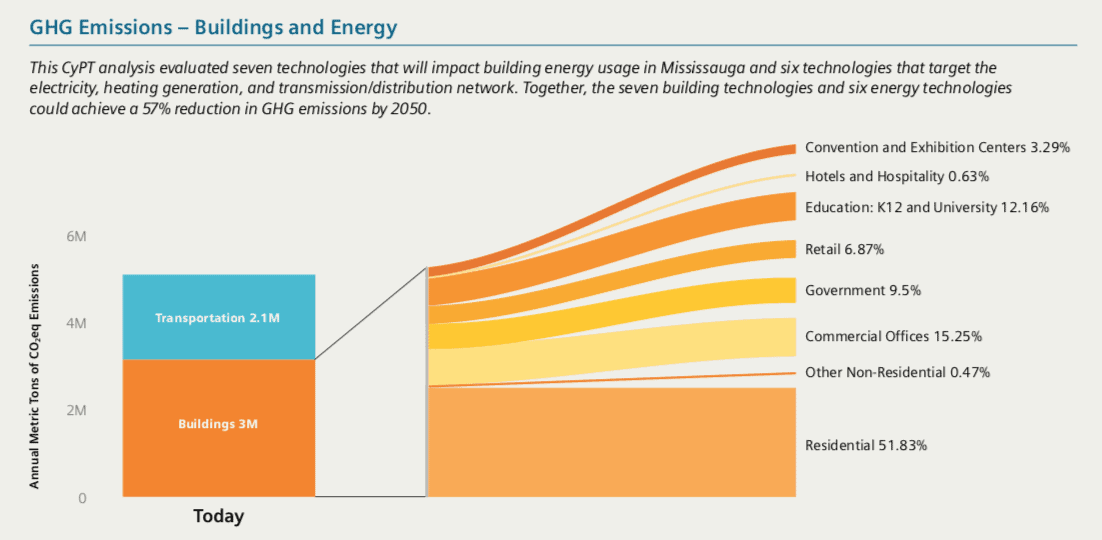Here Is What The City Should Do About The Significant Increase In Gas Emissions
Published June 13, 2019 at 6:42 pm

According to Siemens, Mississauga could reduce greenhouse gas emissions by more than 81 per cent by 2050. The effective implementation of more environmental technologies could also result in more than 290,000 local jobs being created by 2050.
Mississauga’s Climate Future: Technology Pathways to a Sustainable Future in 2050 identifies potential measures to achieve an 80 per cent reduction in greenhouse gas emissions by 2050. The report will also help guide the city’s first comprehensive Climate Change Action Plan.

“Siemens analyzed the city’s infrastructure data through our City Performance Process using a data-driven tool that allows cities to make informed infrastructure decisions, through the lens of the sustainability goals. The analysis found that the city would need to transition to 100 per cent generation of renewable electricity and 62 per cent passenger travel by transit and active transportation to achieve its goals,” said Martin Powell, global head of urban development for Siemens.
The city must also improve heating demands in buildings. Currently, space and water heating consume 83 per cent of the total energy usage in residential buildings and 58 per cent in commercial and municipal buildings in Mississauga. Siemens suggests switching to Combined Heat and Power and air-source heat pumps. Together, these solutions have the potential to reduce emissions by over 38 per cent.
Emissions Baseline
Through collaboration with the city’s Environment Section, data on population and population projections, travel patterns, building footprint, and energy usage, as well as energy mix, was collected and analyzed to create a greenhouse gas emissions baseline for today as well as 2050. Mississauga is the third most populous city in Ontario and is expected to grow by 27% over the next 30 years, which entails an 18 per cent increase in greenhouse gas emissions for 2050 as compared to today. However, there may also be a decrease by 35 per cent in single-occupancy vehicles mode shares and a 10 per cent increase in renewable fuels in the electricity mix.

Buildings and Energy
Today, buildings in Mississauga cover over 116 million square meters of space. The average energy use intensity of homes in Mississauga is 0.7 GJ/m2, which is the same as the rest of the province. Non-residential buildings in Mississauga are more energy efficient when compared to the provincial average, with the energy use intensity almost three times lower than average. Over 80 per cent of energy expended in residential buildings goes into heating homes and water, compared to non-residential buildings, which only uses 58 per cent of energy expended to provide space heating and water.
Of the 60 per cent emissions attributed to buildings throughout the city, over half come from residential buildings. Siemens recommends that the city and residents use PVs and solar panels, which can help Mississauga save over 670,000 metric tons of CO2 emissions annually. Air-source heat pumps, powered by electricity, will also reduce CO2 emissions as well as improve air quality. If 50 per cent of residential and non-residential buildings follow the recommendations, the city can save over 2 million metric tons of greenhouse gas emissions.



Transportation
Even with a 26 per cent growth in bus ridership in Mississauga between 2011 and 2016, traffic and congestion is still a concern in Mississauga. With approximately 200,000 additional residents set to call Mississauga home by 2050, the need for infrastructure and investments in public transit are becoming more apparent. Thus, the city is already developing its first Transportation Master Plan. Currently, Mississauga residents travel an average of 44 km per person per day. Around 85 per cent of these passenger kilometres travelled are in single-occupancy vehicles, which represents a significant source of emissions. In 2016, 218 million vehicle kilometres were travelled by trucks within the city’s boundary, which is another significant source of emissions. Over 40 per cent of Mississauga’s CO2 emissions come from the transportation sector. However, on a positive note, Mississauga has the second highest local transit ridership per capita in the GTA (after Toronto) and accounts for less than 3 per cent of the total emissions from transportation.


Siemens helps cities make informed infrastructure investment decisions, and identify the best technologies in the transport, building, and energy sectors. They help cities to mitigate greenhouse gas emissions, improve air quality, and add new jobs to the local economy. More than 45 cities worldwide have used their tools to inform their infrastructure investment decision-making including Mexico City, Minneapolis, Vienna, San Francisco, Madrid, Los Angeles and Nuremberg.
Photos courtesy of Siemens.
insauga's Editorial Standards and Policies advertising





